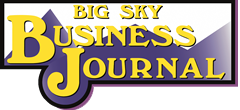By Michael A Vondra, Certified Financial Planner Practitioner Edward Jones
If you’re a dad, you may be in line to get some nice gifts on Father’s Day. But your greatest gift may be your ability to help your children. One way of doing that is to get them started in the world of investing – and making a few investments on their behalf.
Here are three possibilities:
— 529 plan – If you invest in a 529 education savings plan, your earnings can grow federally tax-free, provided the money is used for qualified educational expenses. (Withdrawals not used for these expenses will generally incur taxes and penalties on investment earnings.) If you invest in your own state’s 529 plan, you might receive some state tax benefits, too, depending on how your state’s tax laws apply to 529 plans. State-by-state tax treatment may vary, so you’ll need to consult with your tax professional about your situation.
Provided you stay within certain limits, you can also use a 529 plan to pay for qualified K-12 expenses and registered apprenticeship programs. And you can even use it to repay certain qualified student loans, within limits.
A 529 plan can affect financial aid, but its effect is generally lower than that of other assets. And as the account owner, you have control of your 529, so, if one child decides not to go to college or pursue further education, you can switch beneficiaries.
—UGMA/ UTMA account – When you establish a special type of custodial account known as either UGMA (Uniform Gift to Minors Act) or UTMA (Uniform Transfers to Minors Act), you are providing financial resources that can be used for education or another purpose that benefits your child, such as summer programs.
One potential benefit of an UGMA or UTMA is that some of the earnings will be taxed at the child’s rate, which is likely lower than your own. Plus, UGMA/UTMA accounts typically allow a wide range of investment choices. However, once children reach the age of majority (typically 18 or 21) they gain complete access to the money and can do whatever they want with it.
— IRA – A child with any taxable compensation, such as money from an after-school job, is eligible to fund an IRA. You may want to open one on your child’s behalf – and you can “sweeten” the offer by matching some of their contributions. You can’t directly invest in the IRA, but you can give your child money for that purpose. Keep in mind, though, that the total amount contributed can’t exceed your child’s taxable compensation for the year.
An IRA is a great introduction to the world of investing. For one thing, your child can make small contributions throughout the year, so investing in an IRA doesn’t seem burdensome. Also, since an IRA can be invested in different types of securities, your child can learn about various investment vehicles – stocks, bonds, mutual funds and so on. Plus, you can point out that, with a traditional IRA, taxes won’t be due on the earnings until your child starts taking withdrawals decades from now. (And with a Roth IRA, withdrawals are tax-free, provided certain conditions are met.)
On Father’s Day, you can show your appreciation for whatever gifts you receive from your children. But by investing in their future, you can gain some longer-term contentment.
